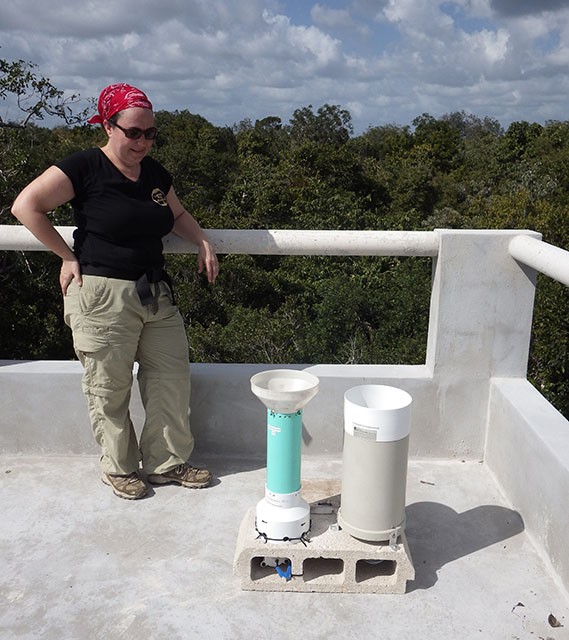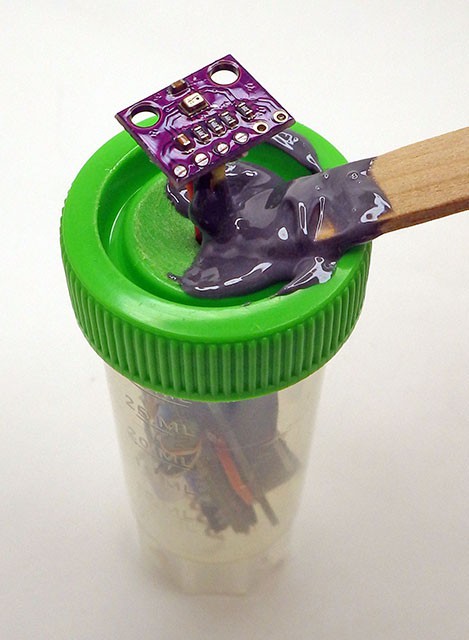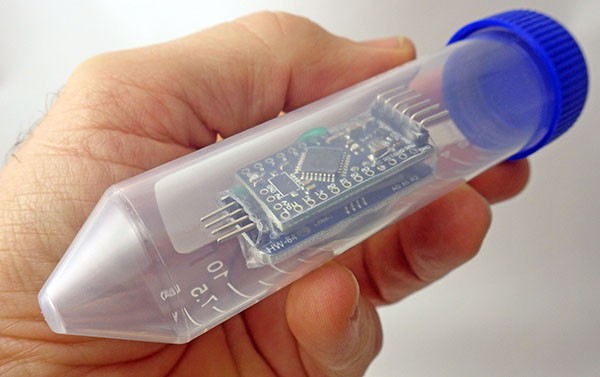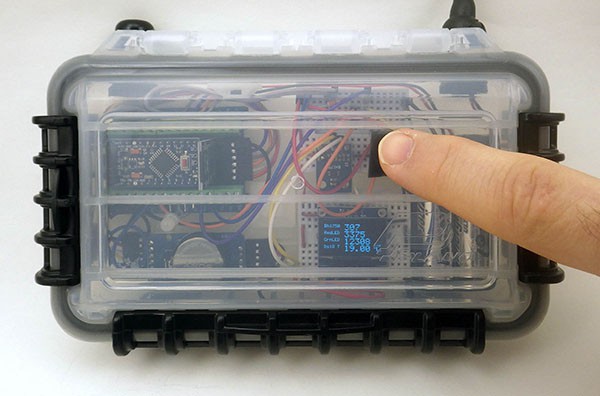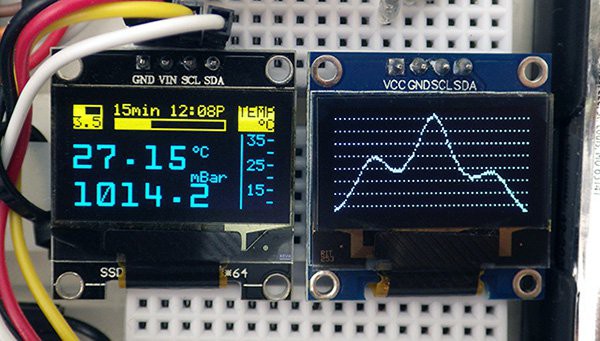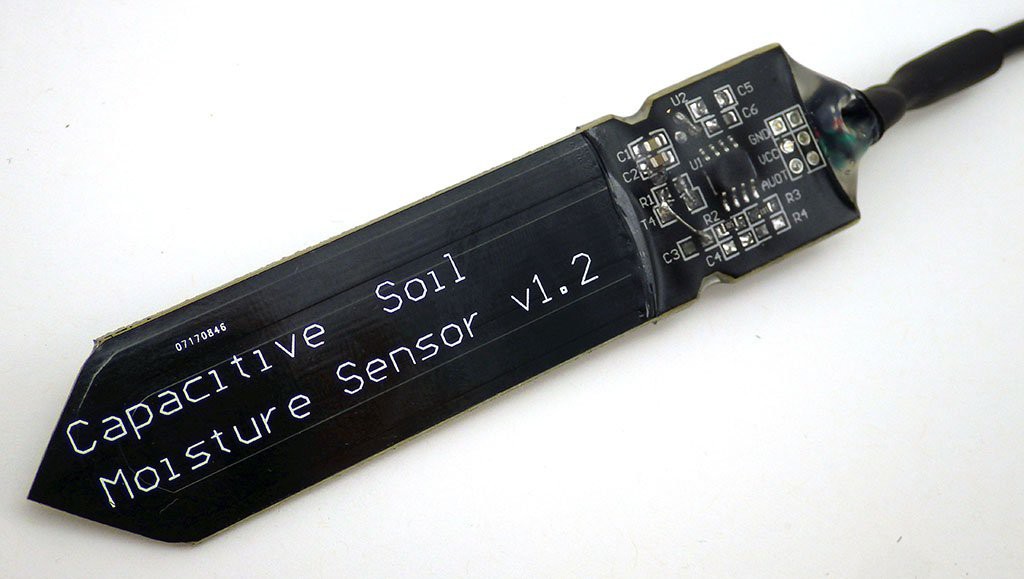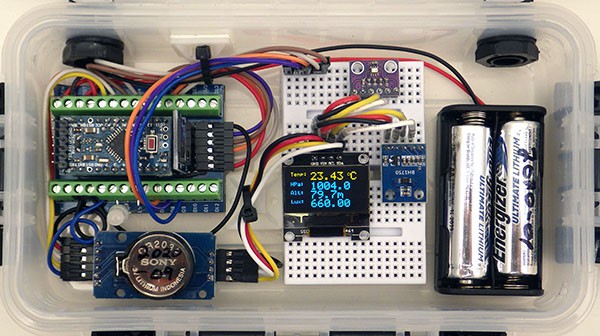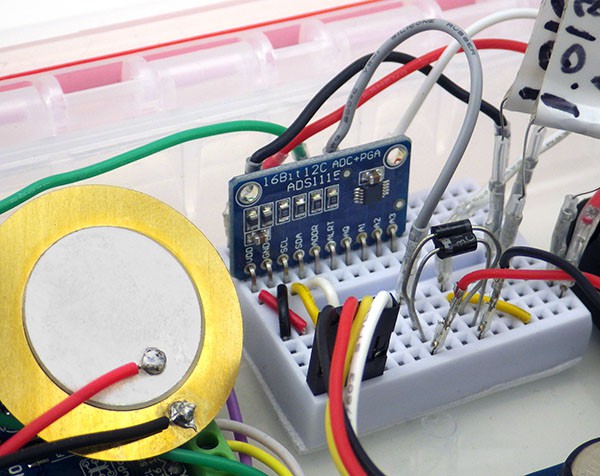-
Insights from a Decade of Tipping Bucket Rain Gauge deployment
04/17/2023 at 14:59 • 0 comments![]()
I know these janky installations will have the weather nerds out there inhaling through their teeth, but it’s worth noting that we made multiple attempts over the years to do things the ‘right way’ that just kept failing to go the distance. Even in a harshest environment, critters are the biggest threat to actual ‘boots on the ground’ research - both four & two legged. So our rule of thumb for anything that’s going to last is: “Make it ugly & make it heavy”
https://thecavepearlproject.org/2023/04/15/insights-from-a-decade-of-tipping-bucket-rain-gauge-deployment/ -
Waterproofing your Electronics Project
03/17/2023 at 18:34 • 0 comments![]()
I know most Hackaday builders have already worked their way through these issues, but we keep getting calls from researchers new to the game. So I produced a nice summary for them of the waterproofing techniques we’ve used over the years. Hopefully there’s one or two ideas in this post that folks here find useful. Cheers!
https://thecavepearlproject.org/2023/03/17/waterproofing-your-electronics-project/ -
Powering our ProMini logger for One Year on a Coin Cell
03/10/2022 at 15:57 • 1 comment![]()
It’s been a long time since I posted, and you’d be forgiven for thinking the Cave Pearl Project was yet another victim of COVID. While the attendant travel restrictions did require replacement of entire field deployments (due to battery leakage) we are still very much alive & kicking. Several sensor development & student projects are on a slow burn, but unfortunately that also involves a ‘soft embargo’ on the newest toys until certain students finish their papers...
Anyway, at this point we’ve proven that it IS possible to teach a ‘hands on’ instrumentation courses over zoom. Though that required removing soldering from the labs - something which is highly suboptimal from a fieldwork perspective. Other teachers stepped into the breach with us, and with feedback about their time & budget limitations we've developed a new 2-Part ‘EEprom only’ version of the logger which handles all download & control through the IDE’s serial monitor window. Unix timestamps are reconstituted from the record number during download which means none of the limited storage space gets used for that predictably repeating sequence.
A typical sleep current below 5uA means this new data logger will easily run for a year on the CR2032 backup coin cell that’s already attached to the RTC module, and unlike just about every other low-power Arduino project we haven’t used custom fuse settings or bootloaders to lower the BOD. With a 220uF tantalum buffering the rail none of that annoying confabulation is necessary. Add a couple of cheap 32 or 64k EEproms and you have the perfect platform for low power sensor ICs like the BH1750, BMP280 or the SiLabs7051. This may well be as minimal as it is possible to get and still offer beginner level students an opportunity to develop their own final projects.
https://thecavepearlproject.org/2022/03/09/powering-a-promini-logger-for-one-year-on-a-coin-cell/ -
Using Excel's FFT to derive a tidal frequency spectrum
04/13/2021 at 15:04 • 0 commentsI know these are coming out seemingly at random, but that's because we are trying to fill gaps in the stuff that's already out there. Basically if neither Dr. Beddows nor I can find a decent reference for something we use frequently then we just make it. Tidal data was used here, but the basic technique generalizes to other applications.
-
Using Excel to derive fit equation constants
04/09/2021 at 15:00 • 0 commentsCross calibrating to a reference sensor is a routine task for people who build loggers, but there are surprisingly few tutorials on YouTube that describe the process of deriving constants for an empirical fit equation with Excel. Especially ones that describe this process with messy 'real world' data.
So here's a quick walk through comparing timing data from a the photo discharge of a reverse bias LED to the Bh1750 Lux sensor. The error on this run was too high to be practically useable, but this kind of exercise is just the starting point to refine the physical system. We will make a post on all the gory details of that process later. -
Enhance your Logger with an OLED & TTP223 Capacitive Touch Switch
03/01/2021 at 21:02 • 0 commentsCOVID really made it hard to run the kind of open-ended projects the e360 students normally tackle in Dr. Beddows instrumentation course. So we added a lot of new sensors to the logger build kits we had to send out. Yes, the whole course is being run over Zoom, and no we are not happy about the fact that the students are not doing any soldering... but it is what it is.
As we expected the OLED screens were a big hit, but something that worked even better was the cheap little touch switches we threw in with them.Enhance your Logger with an OLED & TTP223 Capacitive Touch Switch
![]()
On their own the switches are twitchy - to the point of being annoying. But once you get enough 'interfering' material in front of them they settle down and fly right. Now if I could only get them to work under water.... -
Adding dual OLED displays to your Arduino logger
11/15/2020 at 16:39 • 0 commentsOK, looks to be a loooooong winter this year. Hoping to spend some of that time updating our underwater prototypes, and would like to give a few of them real-time output. With I2C #OLED's getting so cheap lately, there's no reason to squash it all onto just one display:
https://thecavepearlproject.org/2020/11/15/adding-two-oled-displays-to-your-arduino-logger-with-no-library/![]()
-
Hacking a Capacitive Soil Moisture Sensor for Frequency Output
10/28/2020 at 17:49 • 0 commentsOk, right up front I'll admit that combining an $1 ADS1115 board with these cheap soil moisture probes is already a decent soil moisture solution for most projects. So I was just messing around here to see what I'd get:
https://thecavepearlproject.org/2020/10/27/hacking-a-capacitive-soil-moisture-sensor-for-frequency-output/![]()
Pin powering the low-power TLC555 worked well, but at the low-ish output frequencies I was using it's really only good as a water level sensor because the probe polarizes over time in soil. But I'm sure I'll find a problem for this solution sooner or later :-)
-
Pro Mini Classroom Datalogger [2020 update]
10/24/2020 at 18:35 • 0 commentsCovid is making it hard to predict whether students will be in the lab, or working from their bedroom. In response to that uncertainty we've done an incremental update to the 'Classroom Logger' tutorial from 2019 which separates the soldering steps from the rest of the assembly:
https://thecavepearlproject.org/2020/10/22/pro-mini-classroom-datalogger-2020-update/![]()
Instructors can remove those steps as need for whatever confounding situation they are dealing with at their institution. Though I have to say, it's profoundly disagreeable to realize that this years crop of environmental monitoring students might not learn how to solder.
-
Using the ADS1115 in Continuous Mode for Burst Sampling
05/21/2020 at 18:47 • 0 comments![]()
Here's a first look at doing something interesting with an ADS1115 ADC module:
https://thecavepearlproject.org/2020/05/21/using-the-ads1115-in-continuous-mode-for-burst-sampling/
For day to day tasks, it's already something of a work horse for Makers. But I wanted to push it to it's max settings to see if it's really useable for research level applications. The answer is a tentative yes, but only at the fastest 860 sample per second speed. And with small signals, EMI is more of a problem than the limitations of the ADC itself. I'm sure that's not news to any analog hardware hackers out there, but I'm kind of a digital kid who's still learning as I go along.
The Cave Pearl Project
Creating a generic data logging platform that is easy to build & modify for many different environmental monitoring projects.
 Ed Mallon
Ed Mallon